By Vince de Jong & Marijne Scherjon
RIO DE JANEIRO, BRAZIL – In 1986, Larry Harvey and Jerry James ritually burned a 2.7-meter-high wooden man on a beach in San Francisco. At that moment, they created a tradition that would very rapidly grow into one of the most extraordinary festivals in the world.
Every year thousands of people gather in the middle of Nevada’s Black Rock Desert, forming a temporary metropolis devoted to creative expression. Until today, the burning ritual remains one of the most important aspects of the world-famous Burning Man festival.
The popularity of this unique event — described as an experimental society guided by principles such as radical inclusion and participation — keeps on growing. Mid-Burn in Israel, Africa-Burn in South Africa; all over the world other burns continue to pop up. This year, Tropical Burn, Brazil’s first ever Burning Man festival, was added to the list.
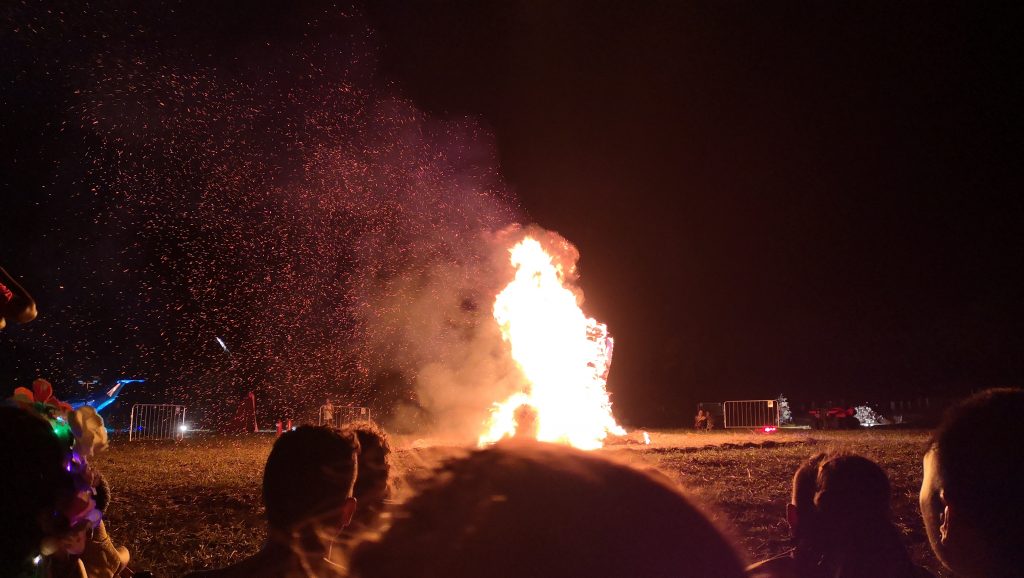
For four days, hundreds of people from all over the world created their own small society in a tropical no-man’s-land somewhere in the northeast of Brazil. Without really knowing what we got ourselves into, my partner and I bought tickets, jumped in the car with some fellow “burners” and started our Tropical Burn adventure.
Welcome home!
Riding on small dusty roads that curve through the dunes of Rio Grande do Norte, we arrive at our destination. “This must be the place”, we say to each other. According to the coordinates, we had found the location of Brazil’s first Burning Man festival.
Two women with painted faces wearing animal tails and glitter rush towards us and welcome us: “Is this your first burn?”, they ask. “Yes,” we answer in unison. “Do you know the ten principles of Burning Man?” We hesitate for a second, but then start guessing: “participation, radical self-expression, self-reliance, inclusion, decommodification, communal effort.”
The two women look satisfied and dictate the rest of the principles: “gifting, immediacy, civic responsibility, leaving no trace.” Then they order us to get on our knees and kiss mother earth. After that, we have to roll over on the ground so we can get used to the dirt and start feeling one with nature. The ritual ends with a group hug: “Welcome to Tropical Burn, welcome home!”
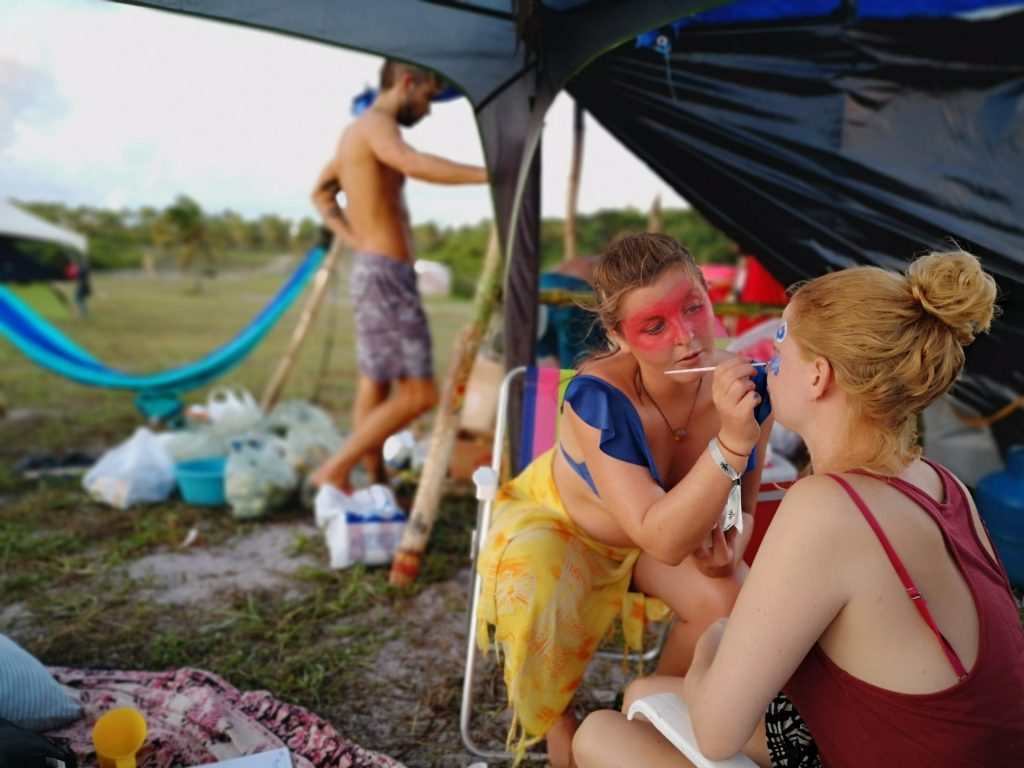
What a temporary tropical village looks like
Compared to Black Rock City in the Nevada desert, Brazil’s first Burning Man looks more like a tropical hippie collective. About 400 burners, spread among twelve camps, ten showers and sixteen toilets, are surrounded by hundreds of palm trees, cactuses, art-works, and a beautiful deserted beach. In the center of our intimate village stands the Divine Mother, a wooden structure of a pregnant woman representing mother earth and everything that arises from it. Like the first Man in 1986, she will be ritually burned at the end of the festival.
“I feel free!”
To make it through the festival, our fourteen-headed-camp has brought 200 liters of water, just enough food for four days, cooking devices, hammocks, tents, a ukulele, guitar, strong liquor, party outfits, and presents to hand out. We use bamboo to build our kitchen and canvas to protect our camp from rain and sun.
Although conditions are not comparable with the Nevada desert, the tropical climate does test our survival skills. Heavy winds turn one or two delicious meals into sandy pasta, and some of our bedrooms get carried away by the wind. The tropical heat and hangovers are escapable by taking a swim, but you have to be careful not to drown in the aggressive waves of the Atlantic Ocean.
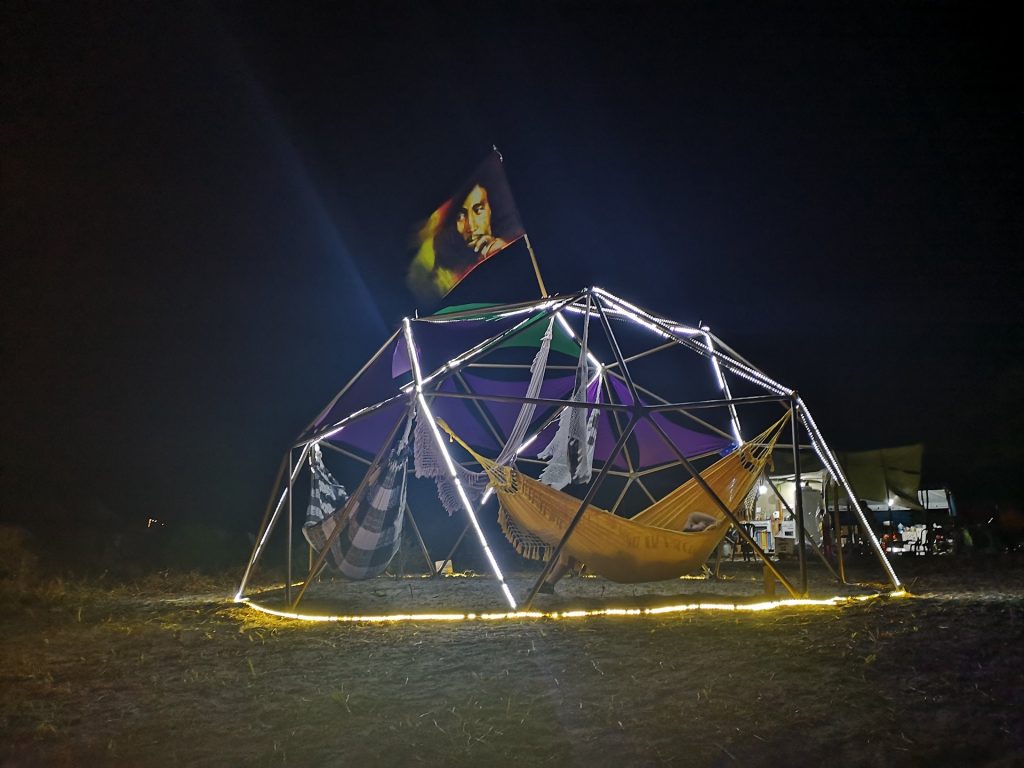
The act of giving
The village is divided into different theme camps that provide all kinds of activities. During the day you can attend a workshop in the Feminist Camp, cook and eat lunch at Xama naXana (kitchen & psychedelia) or get comfortable with a meditation session in the Aldeia Zen-Camp. Oddly enough, the Zen-Camp also has the biggest speakers, which transforms it into the place-to-be by night, with DJ’s playing techno-tunes until way after sunrise.
“I feel gratitude. Especially for all knowledge, personal, and collective growth. For the new friendships and gifts of life. Thank you Tropical Burn, thank you, Universe.”
From finding spicy drinks like Xequimate (rum, mate, ginger, and lemon) at the open bar in the Zen-camp to booking a love-room in the Mud Inn Motel: it is all possible and completely free of charge. Gifts like hugs and kisses are continuously exchanged. To preserve the spirit of gifting, which is unconditional and does not contemplate a return, commercial sponsorships, transactions, or advertising are not allowed. The only thing you could buy at the festival was ice.
In order to create the act of giving, participation is also required. Therefore, all burners join a theme camp and define their participation beforehand. Whether it is by DJ’ing, giving workshops, or helping out in the kitchen, people automatically become volunteers when purchasing a ticket. During the festival, we collect people’s thoughts by inviting burners to express, and write down, how they feel.
“I feel sand in my eyes, I feel happy and a bit confused, I feel some acid in my body, I would like to feel more. I would like a juice. I feel I’m going into the water. I go. I feel like a kid.”
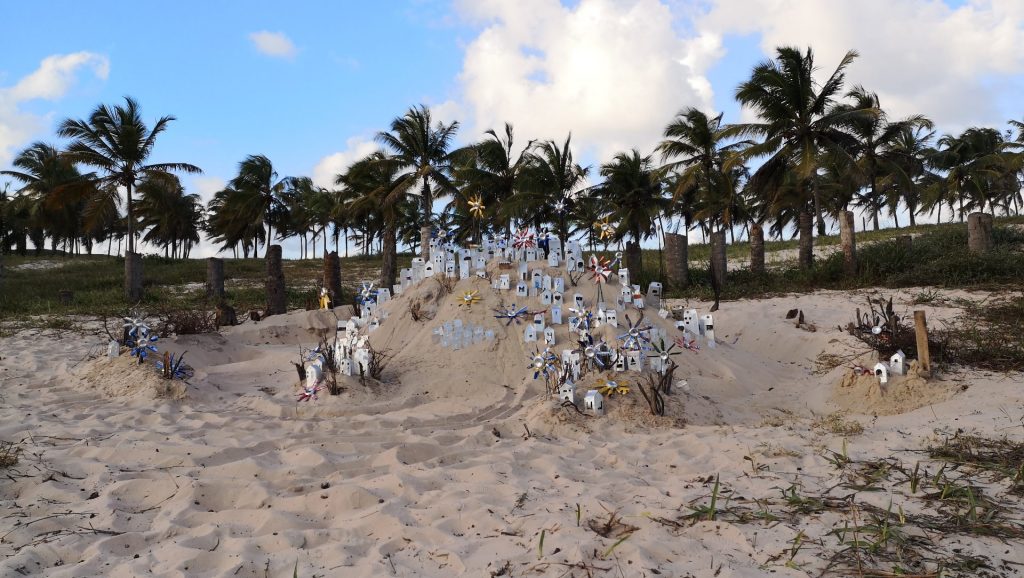
Expressing and experimenting in the Tropical Burn society
As time passes, the inhabitants of this temporary village come closer to each other. On the dancefloor, somebody throws his arms around the burners to his left and right. Before even realizing it, he started a group dance in which everybody participates. On the beach, somebody gathers all the people and creates a massive massage train. The beautiful thing of such spontaneous acts is that nobody is excluded or judged, feelings that are often experienced in life outside the festival.
When we ask one burner what is so special about Tropical Burn, she lifts up her shirt and shows her breasts: “Here I can just do this, and nobody cares.” A group conversation follows in which everybody shares their struggles with “expressing themselves in society.” In the society of Tropical Burn, it doesn’t seem to matter what you look like or where you come from: you can be yourself — whoever that is — and express yourself accordingly.
“I feel the wind. I try not to think about how I feel. To let it flow, not to control like I always do. I feel lucky, but I don’t appreciate it. I feel that I can feel what I want to feel.”
This unique atmosphere, which is strengthened by the small-scale character of the festival, also invites its members to experiment. We remember the words of the welcoming team: “If you want to do something, try it now!”, they said to us. Whether it is with art, drugs, sexuality, or something else, people are encouraged to overcome possible barriers that they feel exist between them and their inner selves. This principle of immediacy is a very important touchstone in the Burning Man community.
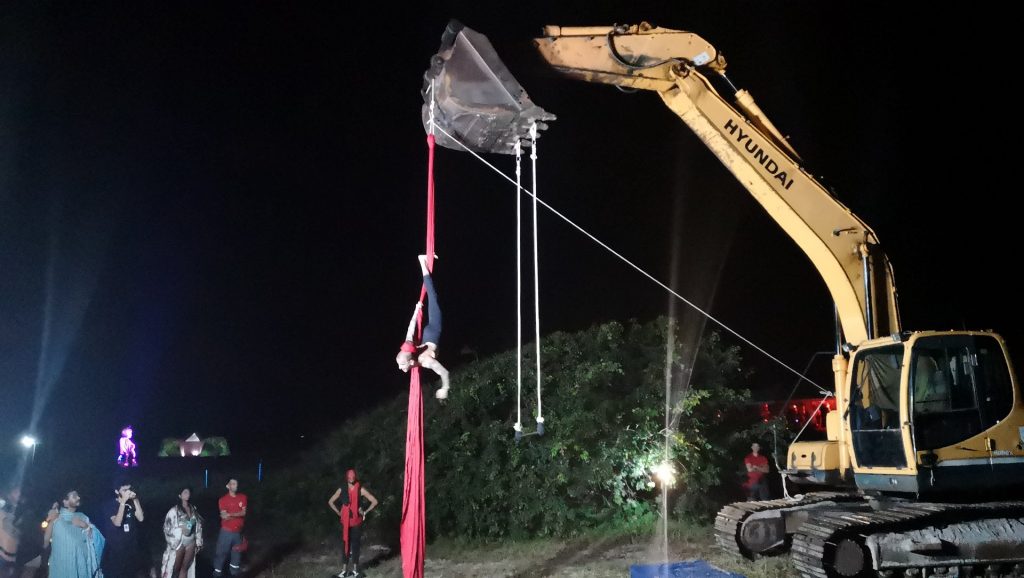
The Burn of the Divine Mother
On the last day, when the sun goes down, the burning ritual begins. With the entire community, we gather around the Divine Mother in a giant circle. Some write down a message or place a personal belonging on the wooden structure. Then, a group of fire artists heats up the crowd, and we can feel the excitement rising. When they light up the Divine Mother, and she transforms into a sea of flames, everybody starts cheering. Most people are emotional and hold each other; some look happy; some have tears in their eyes.
The burn of the Divine Mother is a community ritual, and its meaning can be interpreted in many different ways. We feel satisfied and sad at the same moment. It means that our own small created society is coming to an end. At midnight another structure – the temple – goes up in flames, and the next morning the packing and recycling process begins. Within two hours, our camp is fully set and ready to leave without leaving a single trace.
“I love the energy on the dancefloor while I’m playing. I never felt something like it before. This is my first burn and it will be the most memorable. Thanks to everyone who is here with me in this moment of my life.”

In four days, we have had a lot of new, amazing, and loving experiences and feel blessed to have met so many beautiful people. We have experimented with a radical alternative of living together and managed to create a unique community with our own rules and values. Through this experience, we rediscovered some of our personal talents and flaws, but it also illustrated how we could live in a more equal, livable, and sustainable society. We are happy to see that the global Burning Man community continues to grow and is spreading its inspiring philosophy to more and more people all over the world.

